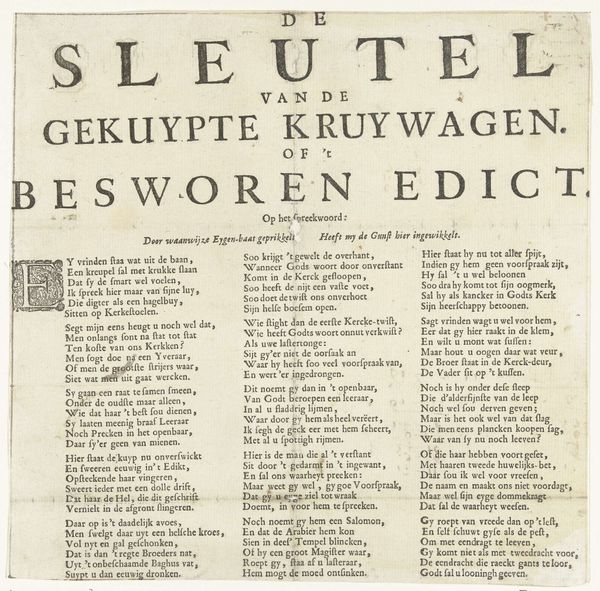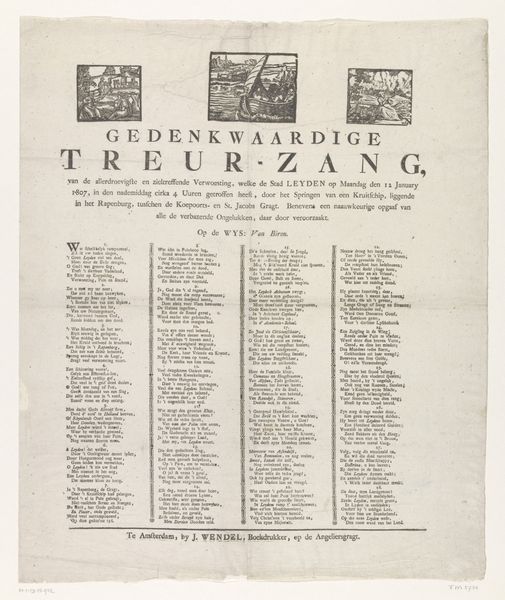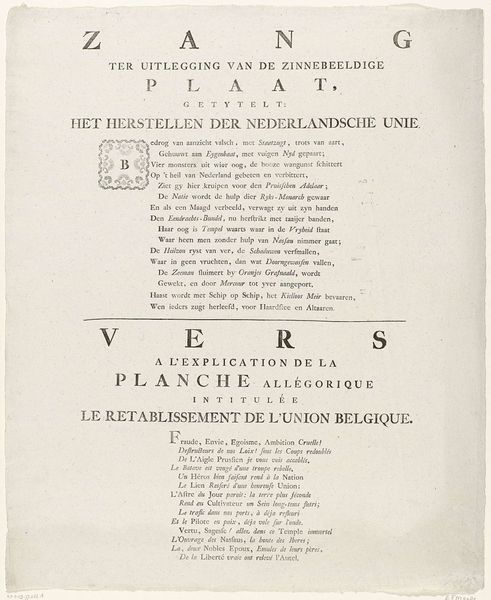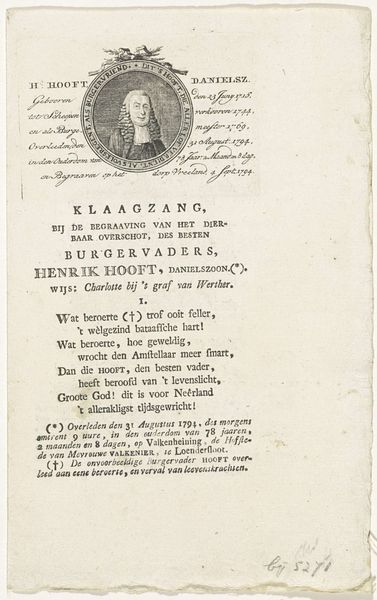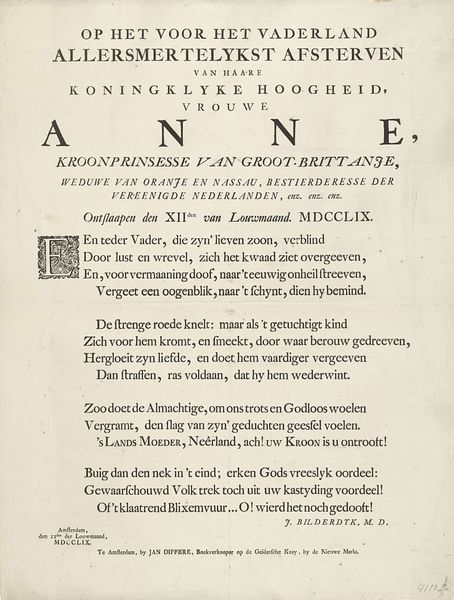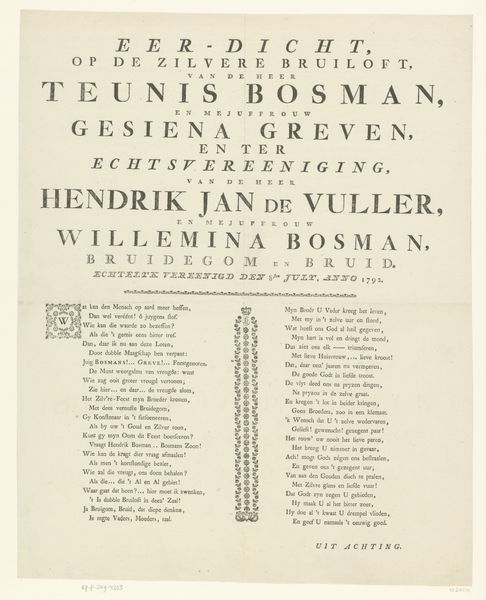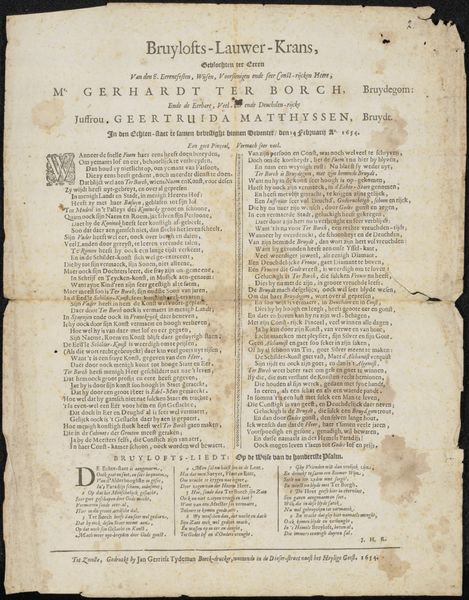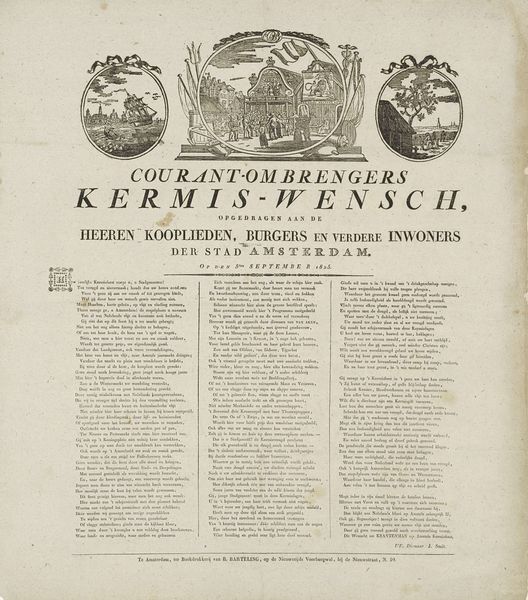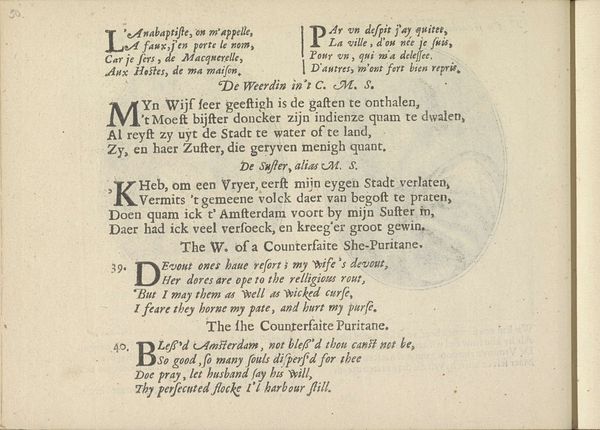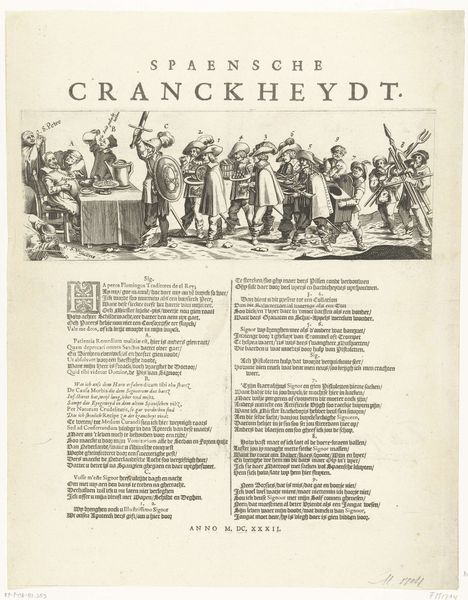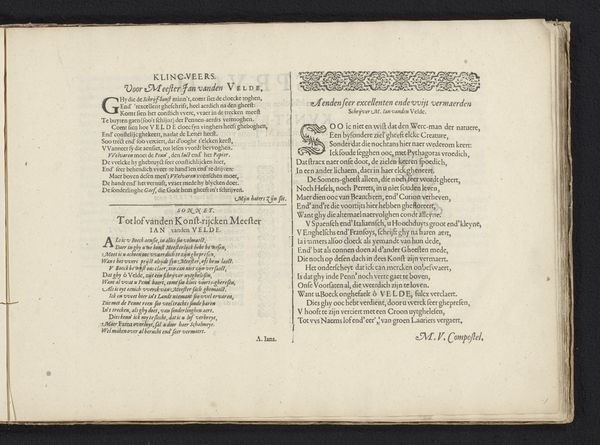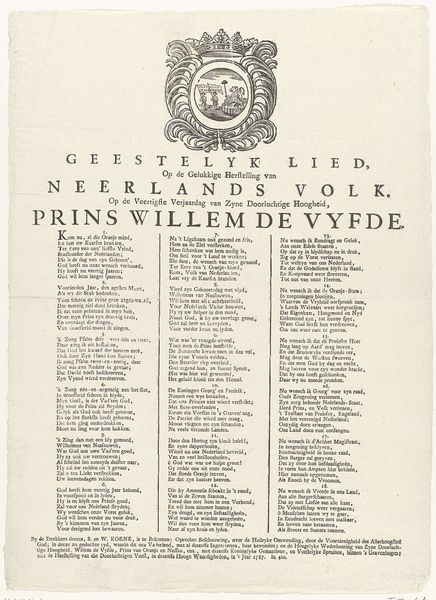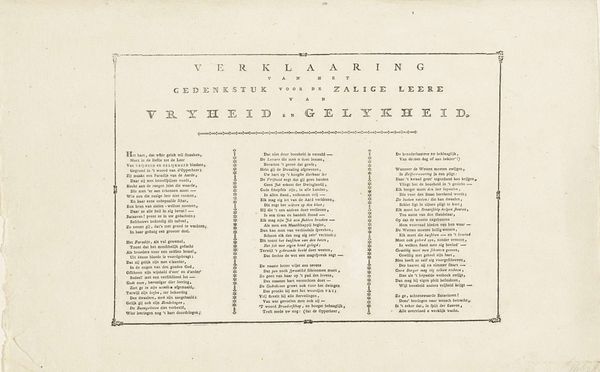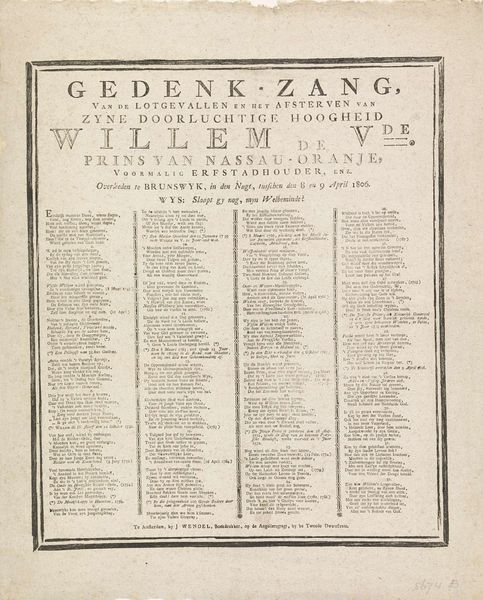
Verklaring bij de herdenkingsplaat ter gelegenheid van het gouden huwelijksjubileum van Pieter van Loon en Agneta Graswinckel, 1722 1722
0:00
0:00
drawing, graphic-art, print, textile, paper, typography
#
portrait
#
drawing
#
graphic-art
#
script typography
#
hand-lettering
#
dutch-golden-age
# print
#
hand drawn type
#
hand lettering
#
textile
#
paper
#
typography
#
hand-drawn typeface
#
fading type
#
stylized text
#
thick font
#
handwritten font
#
historical font
Dimensions: height 540 mm, width 411 mm
Copyright: Rijks Museum: Open Domain
Curator: Today we’re looking at “Verklaring bij de herdenkingsplaat ter gelegenheid van het gouden huwelijksjubileum van Pieter van Loon en Agneta Graswinckel, 1722,” a print by Jan Goeree, created in 1722. Editor: My first thought is, what an intricate typographic composition! It’s dominated by tightly packed text and, despite its monochrome palette, has an undeniable visual complexity. Curator: It's interesting you point that out because these kinds of presentation prints often functioned as formal pronouncements, announcements of important life events in affluent Dutch society. The layout certainly echoes that sense of significance. Editor: It almost feels less like something meant to be easily read and more like a kind of symbolic tapestry celebrating Pieter van Loon and Agneta Graswinckel. It creates a sense of ornate tradition through the density of the letterforms. Curator: Exactly. Consider the context: Commemorating a golden wedding anniversary would have been quite remarkable for the period. It visually elevates this couple’s standing in the community. And with text in dialogue form. Editor: A dialogue! I noticed different sized fonts at work, perhaps representing different speakers? It makes one want to learn more about Dutch customs and social theatricality in that moment in history. Curator: Precisely. It’s a dialogue between "Beschouwer" and "Verbeelder", meaning Observer and… well, that second word suggests one who conceptualizes. It tells a story about how they interpret a wedding day together. It makes one realize the artwork is for more than mere presentation. Editor: The detail really draws you in, wanting one to almost participate in the discussion and discover the answer. The lettering, with its variations in weight and style, enhances that effect of separate speakers, while forming an attractive aesthetic as a whole. It certainly represents the event beyond its function as public announcement. Curator: It also shows the role of visual culture in reinforcing social values and familial status in the Dutch Golden Age. That it’s found here at the Rijksmuseum reinforces its position as a notable artistic contribution. Editor: This examination reveals how closely linked formal artistic expression and cultural customs are. What a lovely peek into the artistic world of typography combined with important information and symbolism from the 1700s.
Comments
No comments
Be the first to comment and join the conversation on the ultimate creative platform.
